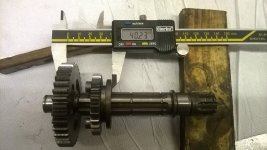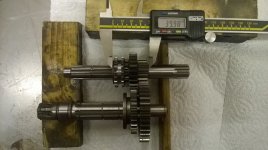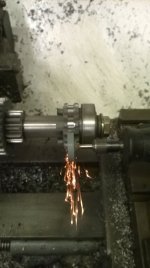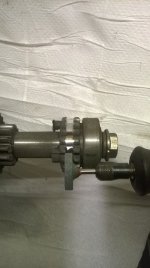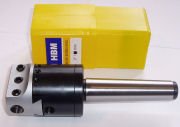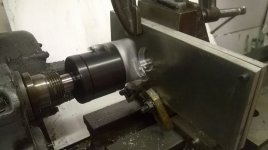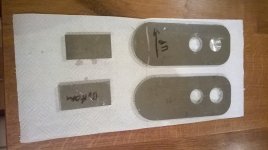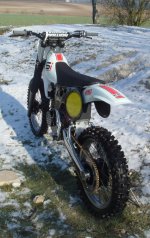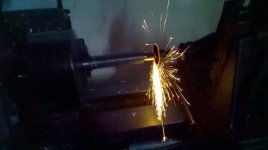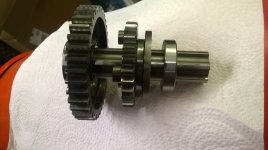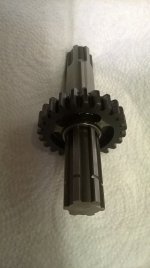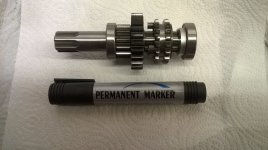ksithumper
100 mW
- Joined
- Oct 24, 2014
- Messages
- 45
Ok, here is the background and the plan...such as it is... 
Now and then I ride an old hardtail mtb on the trails with my teenage sons (and yes, they are much quicker than me). None of us have ridden an electric bicycle, but figure there is some fun to be had...
The idea is therefore to build a powered enduro/XC type MTB to help in two ways: to add range and take away some of the strain on long uphill climbs on the open trails (and any road liaison sections), and to assist on narrow trials-type technical going where gradients/deep mud/rock steps/fallen logs etc conspire to overcome my pedal ability. High road speed is not an issue, 25mph is ample.
With zero e-bike experience, I can't properly specify my needs but, understanding that 1 human power is of the order of 350 watts, I am pretty sure that 250W additional isn't going to be enough. Equally I'm NOT trying to build an electric motorcycle - I want a light/stealthy/assisted MTB with maybe 20-30 miles powered range. Something like 1kW feels right?
The plan therefore is to build a v.1 hack, as a fun learning exercise with my sons and to calibrate power/range/our expectations. Then we'll build a 'proper' v.2 full suspension bike to suit the drivetrain. A hub motor might conceivably meet the needs but instinct says a mid drive is the way to go, so we'll start there. Stealth implies a physically small motor, and that is likely to need 2 or 3 gears to cover my load/speed range. It seems that a robust 2 speed gearbox is something of a holy grail, so let's build one!!
We started today with a Kawasaki KX65 cc bottom end. It has a 6 speed constant mesh gearbox. The speed range between 1st and 6th is approx. 2.62:1, so if we geared for ca 25mph in top gear then 1st gear is good for 8-9 mph - and it should still pull well at half that speed for the technical sections. 1st and 6th it is then. Riding later may show the need for an interim gear, or not.
This gear pair is only 40mm wide. A good start. Pics to follow when I work out how to upload!!
Now and then I ride an old hardtail mtb on the trails with my teenage sons (and yes, they are much quicker than me). None of us have ridden an electric bicycle, but figure there is some fun to be had...
The idea is therefore to build a powered enduro/XC type MTB to help in two ways: to add range and take away some of the strain on long uphill climbs on the open trails (and any road liaison sections), and to assist on narrow trials-type technical going where gradients/deep mud/rock steps/fallen logs etc conspire to overcome my pedal ability. High road speed is not an issue, 25mph is ample.
With zero e-bike experience, I can't properly specify my needs but, understanding that 1 human power is of the order of 350 watts, I am pretty sure that 250W additional isn't going to be enough. Equally I'm NOT trying to build an electric motorcycle - I want a light/stealthy/assisted MTB with maybe 20-30 miles powered range. Something like 1kW feels right?
The plan therefore is to build a v.1 hack, as a fun learning exercise with my sons and to calibrate power/range/our expectations. Then we'll build a 'proper' v.2 full suspension bike to suit the drivetrain. A hub motor might conceivably meet the needs but instinct says a mid drive is the way to go, so we'll start there. Stealth implies a physically small motor, and that is likely to need 2 or 3 gears to cover my load/speed range. It seems that a robust 2 speed gearbox is something of a holy grail, so let's build one!!
We started today with a Kawasaki KX65 cc bottom end. It has a 6 speed constant mesh gearbox. The speed range between 1st and 6th is approx. 2.62:1, so if we geared for ca 25mph in top gear then 1st gear is good for 8-9 mph - and it should still pull well at half that speed for the technical sections. 1st and 6th it is then. Riding later may show the need for an interim gear, or not.
This gear pair is only 40mm wide. A good start. Pics to follow when I work out how to upload!!


